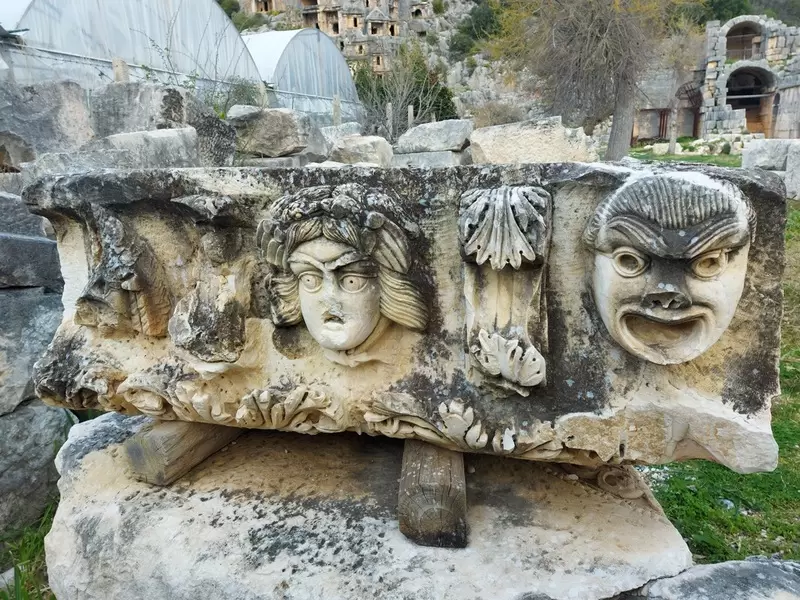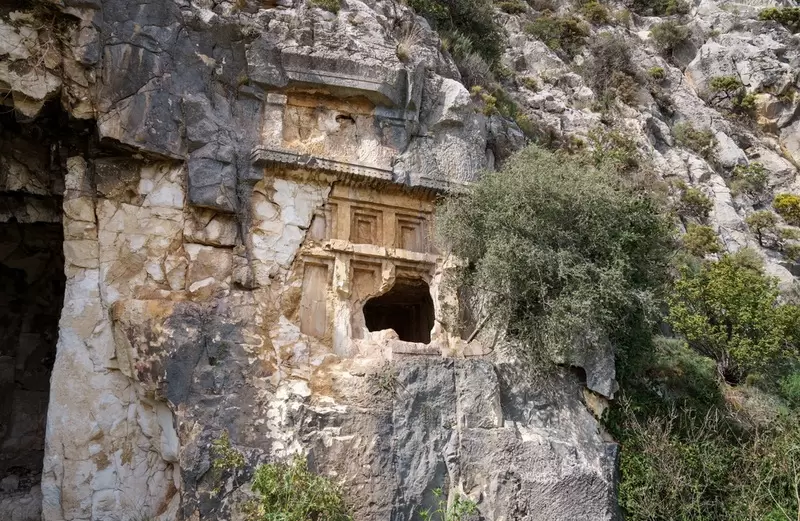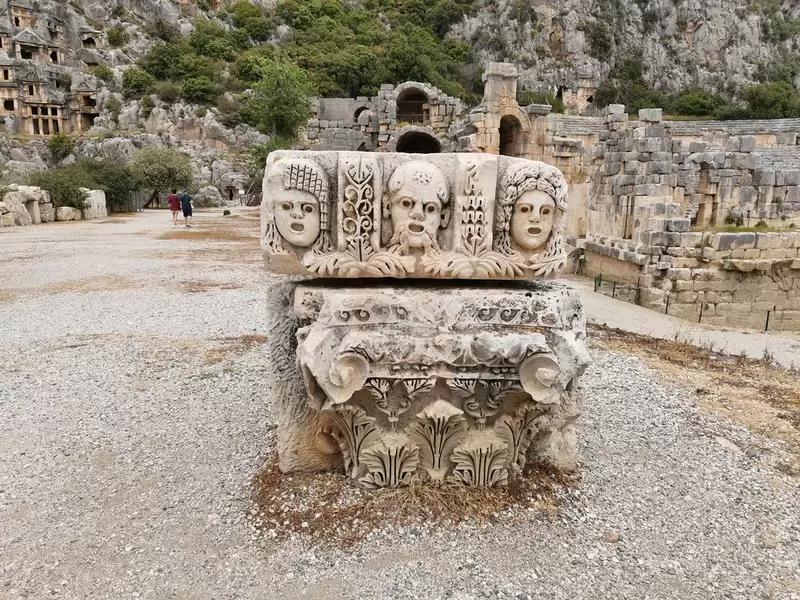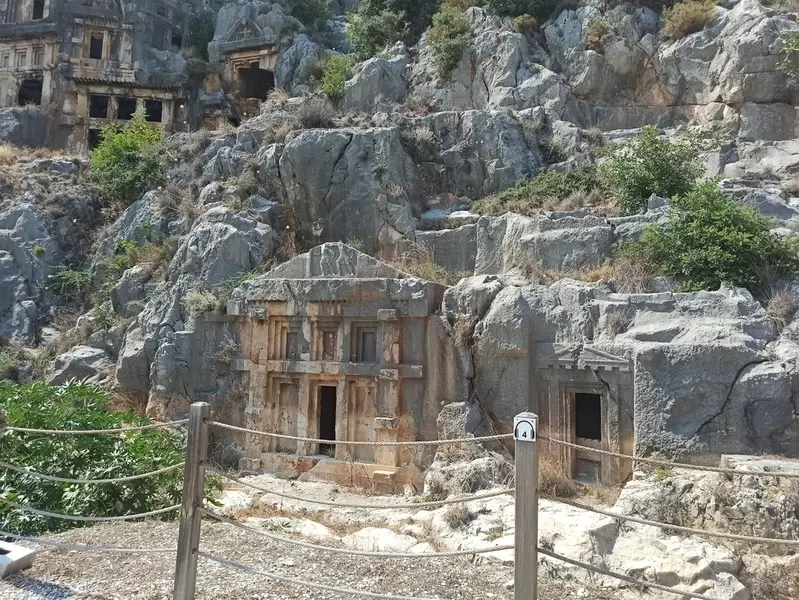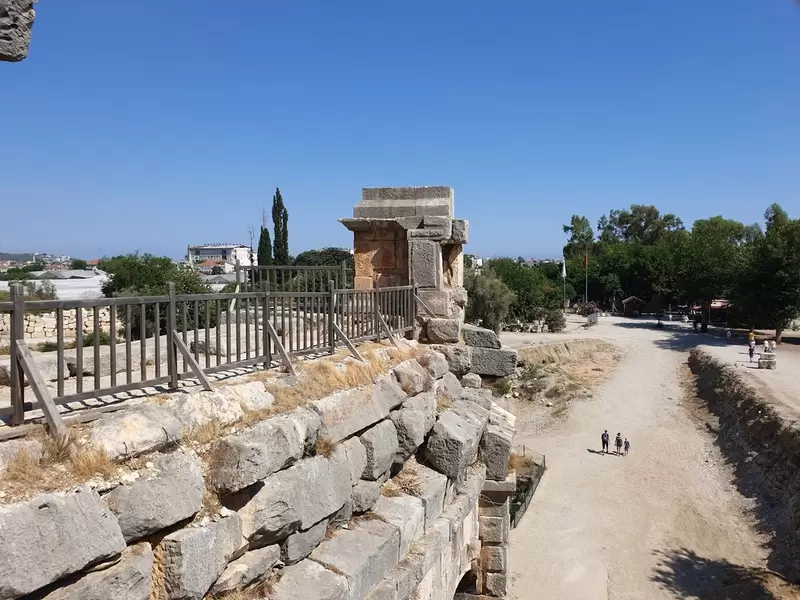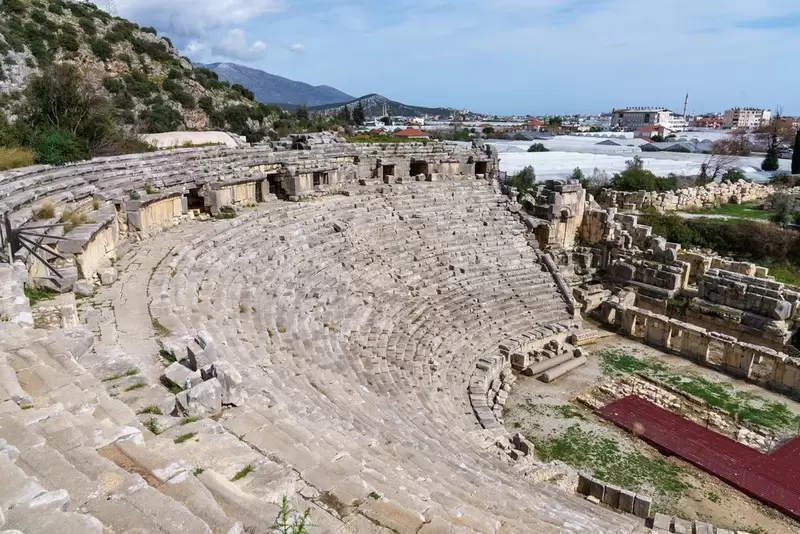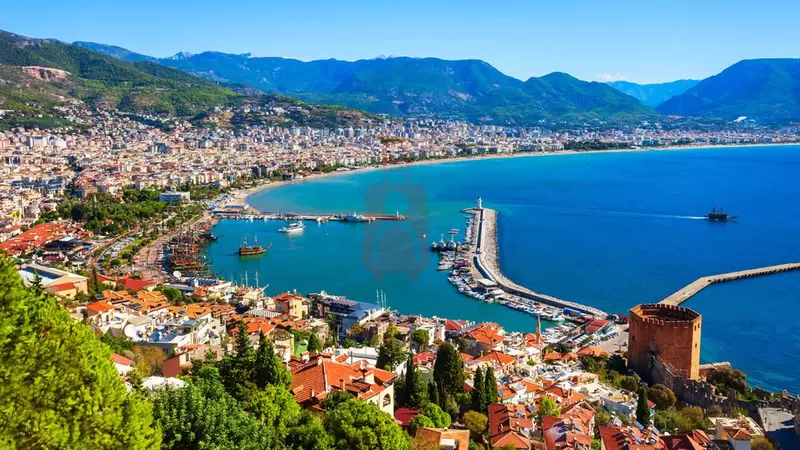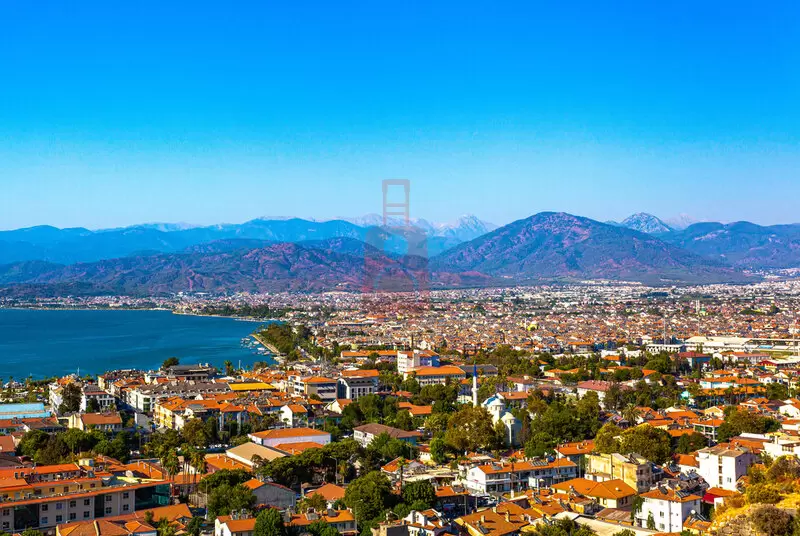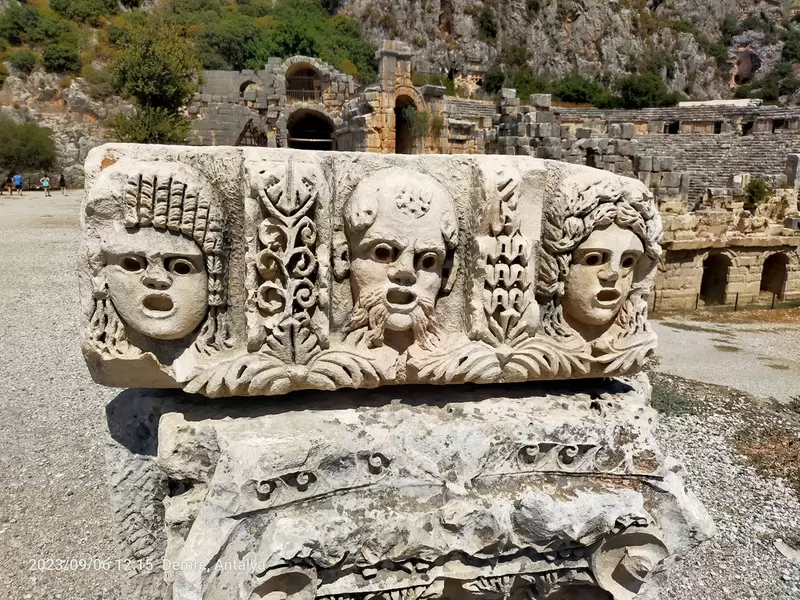
Myra Ancient City, located in modern-day Turkey, is a captivating destination that combines rich history, stunning archaeological ruins, and natural beauty. Let's delve into some travel and historical details about this remarkable site. Steeped in history and adorned with breathtaking ruins, Myra offers a captivating journey through time.
Travel Information:
Myra Ancient City is situated near the town of Demre, approximately 25 kilometers (15.5 miles) west of the city of Finike and 100 kilometers (62 miles) southwest of Antalya in Turkey. The site is easily accessible by road and is well-connected to major transportation routes in the region. Visitors can reach Myra by hiring a private vehicle, taking a taxi, or joining organized tours from nearby cities.
Located near the modern town of Demre, Myra was once a prominent city in the ancient Lycian civilization. Its origins trace back to the 5th century BCE, and it flourished under various civilizations, including the Greeks, Romans, and Byzantines. The city's strategic location on the trade routes between Europe and Asia Minor contributed to its prosperity and cultural significance.
As you wander through the ruins of Myra, you'll encounter remnants of its glorious past. The most iconic feature is the awe-inspiring Myra Theater, carved into the slopes of a hill. This remarkably preserved Roman amphitheater could accommodate up to 11,000 spectators and was the hub of entertainment and cultural events during its time. Imagine the grand performances that once graced its stage, echoing with the laughter and applause of the ancient audience.
Beyond the theater, you'll discover the intricate rock-cut tombs, an emblematic feature of Lycian architecture. These elaborate tombs, known as the Lycian house tombs, were carved into the cliff faces and adorned with elaborate facades imitating multi-story houses. The intricate details and vivid reliefs showcase the artistic prowess of the Lycian people, offering a glimpse into their beliefs and customs surrounding death and the afterlife.
Another must-see attraction in Myra is the Church of St. Nicholas, also known as Santa Claus. This Byzantine-era church is believed to be the final resting place of St. Nicholas, the inspiration behind the beloved figure of Santa Claus. The church's stunning frescoes and delicate architectural features provide insight into the religious and cultural practices of early Christianity.
As you explore the ancient city, don't miss the well-preserved Roman baths, the agora (marketplace), and the remains of the city walls. These remnants paint a vivid picture of a bustling city that thrived for centuries.
Myra's historical significance extends beyond its architectural wonders. The city played a crucial role in early Christianity and was an important center for the spread of the faith. The Council of Myra, held in 325 CE, was a pivotal moment in Christian history as it contributed to the formulation of the Nicene Creed, a foundational statement of Christian doctrine.
While visiting Myra, take a moment to soak in the serene natural surroundings. The city is nestled in a lush valley, surrounded by picturesque hills and the sparkling Mediterranean Sea. The combination of stunning historical ruins and breathtaking landscapes creates an unforgettable experience for any traveler.
Historical Background:
Myra was an ancient Greek and Roman city that thrived from the 5th century BCE to the 11th century CE. It was an important maritime and commercial center in the Lycian region of Anatolia. Over time, Myra grew in prominence and became the capital of Lycia.
Notable Structures and Landmarks:
As you explore the ruins of Myra, you will encounter impressive archaeological remains that reflect the city's historical significance. Some of the notable structures and landmarks include:
1. Lycian Rock Tombs: One of the most iconic features of Myra is its rock-cut tombs. Carved into the cliff face, these elaborate tombs showcase the intricate Lycian architectural style and provide a glimpse into the funerary traditions of the time.
2. Roman Theater: The well-preserved theater of Myra is an impressive sight to behold. With a seating capacity of approximately 10,000 spectators, it served as a venue for theatrical performances and other public gatherings.
3. Roman Baths: The ruins of Roman baths in Myra offer insights into the bathing and socializing rituals of the ancient inhabitants. These baths were an important part of Roman urban life and often served as centers for relaxation and social interaction.
4. St. Nicholas Church: Myra is renowned for being the home of St. Nicholas, the historical figure who inspired the legend of Santa Claus. The city features a Byzantine-era church dedicated to St. Nicholas, which is a popular pilgrimage site for visitors.
Historical Significance:
Myra played a significant role in the history of Lycia and the broader Mediterranean region. As a major port city, it was an essential hub for trade and cultural exchange. The city's wealth and influence can be seen in its architectural achievements, such as the rock-cut tombs and the grand theater.
Myra is also notable for its association with St. Nicholas, the 4th-century Christian bishop known for his generosity and gift-giving. The city's St. Nicholas Church honors his memory and attracts numerous pilgrims and tourists.
Natural Surroundings:
Apart from its historical significance, Myra is blessed with natural beauty. The site is located near the stunning Turquoise Coast of Turkey, offering visitors a picturesque setting of crystal-clear waters, rugged cliffs, and sandy beaches. The combination of ancient ruins and scenic landscapes makes Myra a unique and enticing destination.
Myra Ancient City stands as a testament to the rich historical and cultural heritage of the Lycian region. With its well-preserved ruins, iconic rock-cut tombs, and association with St. Nicholas, it offers a captivating journey through time. Whether you are a history enthusiast, a cultural explorer, or simply seeking a picturesque destination, a visit to Myra is sure to leave you with a deep appreciation for the ancient civilizations and natural beauty of the region.
